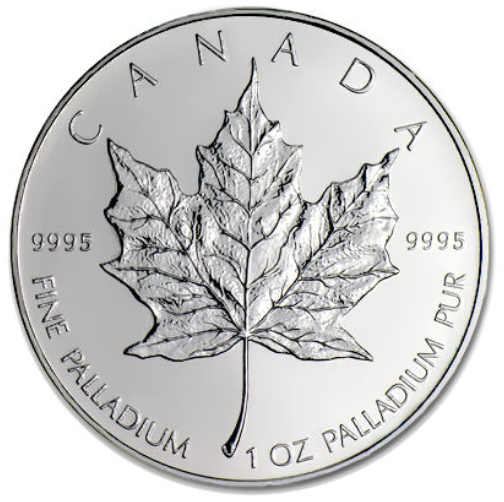Palladium is a rare and lustrous silvery-white metal discovered in 1803 by the English chemist William Hyde Wollaston. He named it after the asteroid Pallas, which was itself named after the epithet of the Greek goddess Athena, acquired by her when she slew Pallas.
More than half the supply of palladium and its congener platinum is used in catalytic converters which convert as much as 90% of the harmful gases in automobile exhaust (hydrocarbons, carbon monoxide, and nitrogen dioxide) into less noxious substances. Palladium is also used in electronics, dentristy, medicine, jewelry, and other applications. Palladium is a key component of fuel cells, which react hydrogen with oxygen to produce electricity, heat, and water.
Ore deposits of palladium are rare. The most extensive deposits have been found in South Africa, the Stillwater Complex in Montana, United States, Ontario, Canada, and the Norilsk Complex in Russia.
The numerous applications and limited supply sources result in considerable investment interest.
The first palladium coin was issued by Sierra Leone in 1966, with Tonga issuing coins in 1967. Since the 1960s, nations including Canada, the Soviet Union, France, Portugal, China, Australia, and Slovakia have issued palladium coins, but most were special commemoratives rather than palladium bullion coins.
The two most-popular palladium bullion coins available are made by the Royal Canadian and United States Mints.
- Canadian Palladium Maple Leaf: One of the first major palladium coins was the Canadian Palladium Maple Leaf. The coin features the same sugar maple leaf on the reverse and effigy of Queen Elizabeth II on the obverse. The coins contain 1 Troy oz of .9995 pure palladium and bear a face value of $50 (CAD).
- American Palladium Eagle: The American Palladium Eagle was authorized by the American Eagle Palladium Coin Act of 2010, but the U.S. Mint didn’t start producing the coin until September 25, 2017. The coin contains 1 Troy oz of .9995 pure palladium, and carries a face value of $25 (USD) fully backed by the U.S. Government. The Palladium Eagle features Adolph A. Weinman’s famed Winged Liberty design on the obverse and his American bald eagle design from the 1907 American Institute of Architect’s gold medal on the reverse.


